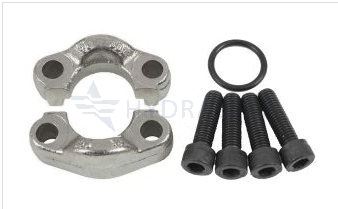Identifying a flange is one of the challenges anyone dealing with hydraulic systems faces. The importance of these parts is often overlooked. However, their reliability is vital to the system’s integrity.
In order to find the right flange for your system, you need to identify it. The process is much more complicated than wielding a measuring tape. You need to consider the following factors during the identification process:
1) Identify The Flange Type
Figuring out the type is the easiest step. All you have to do is look at it. The most common flange types are:
Weld-neck – has a tapered hub, used mostly in high-pressure systems.
Slip on – can be slipped over the pipe, welded inside and outside to increase durability and avoid leaks.
Lap-joint – used with lap joint stub end, can be slipped over the pipe but not welded, held in place by the pressure.
Threaded – attaches to a pipe without welding, used for pipes with thick walls to create an internal thread.
Blind – used to blank off the ends of valve and pipes, suitable for high-pressure environments.
Socket –weld – connects to the pipe with one fillet weld on the outside of the flange.
Swivel flange – consists of two pieces (forged welding hub and a rotating forged ring).
2) Determine The Size
Measuring the size of the flange is not an easy task. You need to find the outer diameter, the inner diameter, the number of bolt holes, bolt hole diameter, and the bolt circle diameter.
Bolt circle diameter (B.C.) is one of the most important measurements to make when identifying a flange. It’s the measure from the centre of the bolt hole to the centre of another bolt hole located on the opposite side of the flange.
3) Consider The Thickness
A highly important flange parameter is its thickness. It determines the amount of pressure the flange can withstand. The thicker the flange, the higher the pressure it can work with. When measuring the thickness of the flange, you only need to measure the outer rim of the part.
4) Read About The Standards
Many standards exist for selecting the right flange for your needs. Depending on the application you are considering and the other components the flange will interact with, you can choose among ASME, ASTM, ANSI, API, MSS, AWWA, DIN, JIS, and more.
When choosing the flange, you are likely to face ANSI (American National Standards Institute), DIN (Deutsches Institut für Normung e.V.), and JIS (Japanese International Standard).
5) Handle The Pressure Class
The pressure class of the flange determines the pressure it can support or operate under without breaking. Each of the above-mentioned standards offers several pressure classes, from low to high. Flange pressure class must be compatible with the pressure class of the parts it works with inside the system.
6) Choose The Materials
Depending on the environment the flange will work in, it’s important to choose the materials it’s made of. Flanges may need to withstand pressure, humidity, high temperatures, corrosion, and more. They are commonly made of stainless or carbon steel as well as copper-nickel.
At Hydrastar, we offer all types of flanges for numerous systems, including high-quality Festo swivel flanges. Our specialists can help you identify the right flange for your equipment.
For more information about our products and services, please download our free e-book How To Minimise Downtime With Pneumatic Plant & Machinery.



